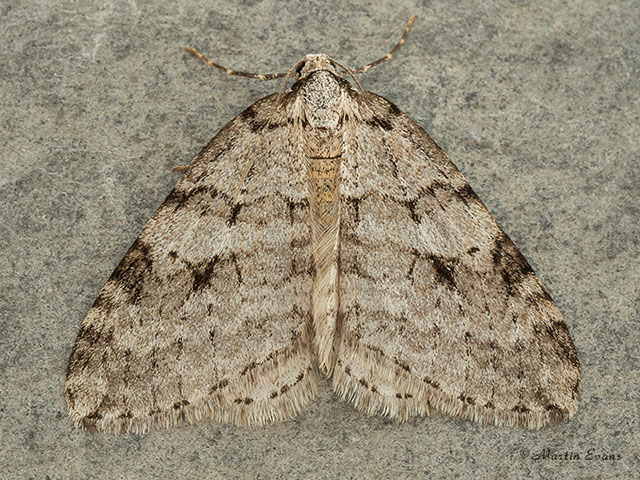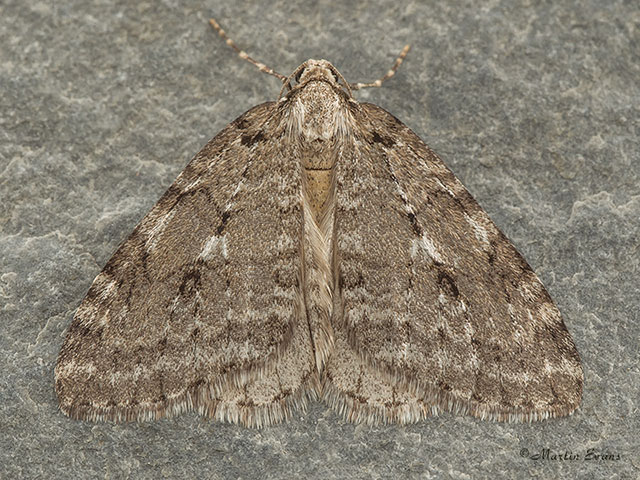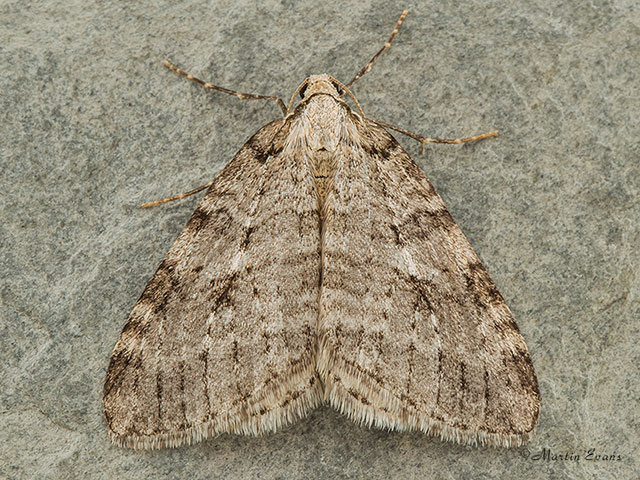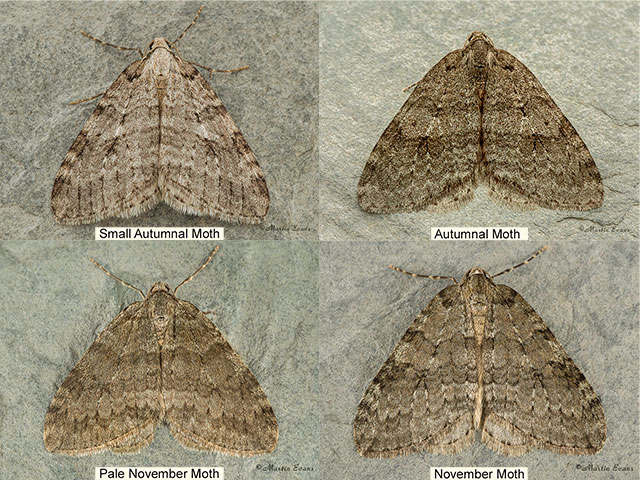Geometridae
70.110 Small Autumnal Moth Epirrita filigrammaria (Herrich-Schäffer, 1846)
Common
Similar species: (These ID features are only useful for well marked specimens). Small Autumnal Moth Epirrita filigrammaria is on average smaller than the other three species (which are all from 16 to 20mm) and usually has a paler thorax. The outer edge of the paler cross-band is deeply indented away from the dark spot, but is almost in line with the edge of the band on each side. Autumnal Moth Epirrita autumnata has the outer edge of the paler cross-band forming a fairly deep indentation away from the dark spot which is well distanced from the edge of the band on each side. Pale November Moth Epirrita christyi has the outer edge of the paler cross-band curving around the dark spot, but is almost in line with the edge of the band on each side. November Moth Epirrita dilutata has the spot in the paler cross-band either linked to the outer edge of the band or integrated with it. If not totally sure, check the genitalia.
Forewing: 14 to 18mm
Habitats: Moorland and lower mountain slopes in areas of taller heather.
Habits: The moth is easily found resting on Heather just after dark.
Foodplant: The larva feeds on Heather, Bilberry and sallows. It has also been reported from Larch. It pupates in the soil.





